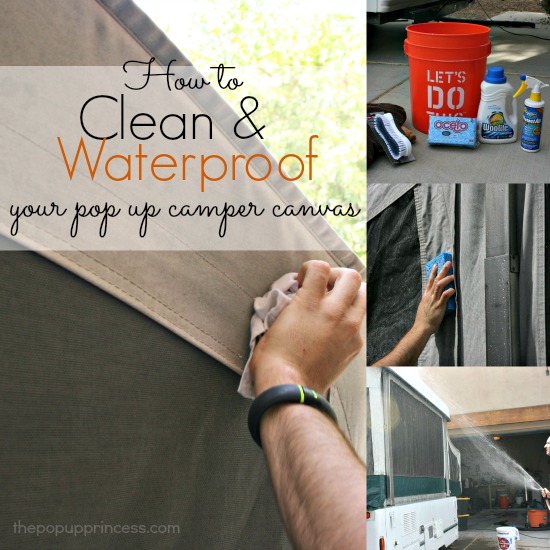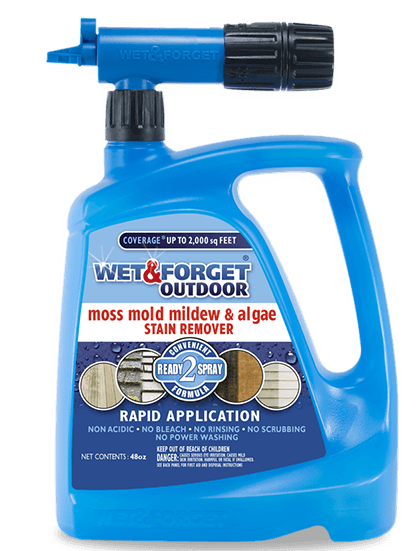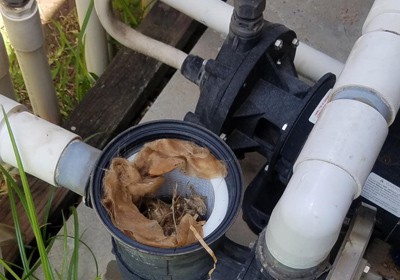Yes, canvas can be wet cleaned to remove mold and mildew. It’s important to use the right methods to avoid damaging the material.
In this guide, we will explore how to safely clean your canvas. Canvas is a durable fabric used for various purposes, from tents to shoes. Over time, it can get mold and mildew, especially in damp conditions. These fungi not only look bad but can also damage the canvas.
Cleaning mold and mildew from canvas requires some care. Using the wrong cleaning methods can harm the fabric. This article will show you how to clean your canvas without causing damage. By following these steps, you can keep your canvas items looking great and lasting longer.
Canvas Material
Canvas material is a popular choice for various applications. It is known for its durability and versatility. This sturdy fabric can withstand wear and tear. But it can also fall victim to mold and mildew, especially in humid environments. Understanding canvas material is important for its care and maintenance.
Properties Of Canvas
Canvas is a heavy-duty fabric. It is often made from cotton or linen. It is woven in a plain weave, making it strong and durable. The fabric is also breathable, allowing air to pass through. This helps prevent moisture buildup. Canvas is water-resistant but not waterproof. This means it can repel light rain but not heavy downpours. Its texture can vary from smooth to rough, depending on the weave and treatment.
Common Uses
Canvas is used in many different ways. It is popular in making tents and sails. Artists also use it as a painting surface. Canvas is common in making bags and shoes. It is favored for outdoor furniture covers. The fabric is also used for tarps and awnings. Its strength and versatility make it a go-to material for many purposes.
Wet Cleaning Benefits
Wet cleaning offers several benefits for canvas, especially when dealing with mold and mildew. This method not only ensures the removal of harmful elements but also helps in maintaining the quality and longevity of the canvas. Let’s delve into the specific advantages that wet cleaning provides.
Efficiency In Mold Removal
Wet cleaning is highly effective in removing mold from canvas. Water and cleaning agents penetrate deep into the fibers. This ensures that mold spores are thoroughly eliminated. This method reduces the chances of mold regrowth. It provides a cleaner and healthier surface.
Preservation Of Material
Wet cleaning helps in preserving the integrity of the canvas. Traditional cleaning methods can be harsh. They may damage the delicate fibers. Wet cleaning, with gentle agents, protects the material. It maintains the texture and appearance of the canvas. This prolongs its lifespan and usability.
In conclusion, wet cleaning is a beneficial method for canvas. It effectively removes mold and mildew. It also preserves the material, ensuring durability.
Mold And Mildew
Mold and mildew are common problems for canvas materials. These fungi thrive in damp, humid environments, causing damage to your canvas items. Understanding the causes and effects of mold and mildew can help you protect and clean your canvas effectively.
Causes Of Mold
Mold and mildew need moisture to grow. They often appear on canvas exposed to rain, humidity, or spills. Poor ventilation also contributes to mold growth. Storing canvas items in damp places, such as basements, can lead to mold development. Even condensation from nearby water sources can create a breeding ground for mold.
| Causes | Details |
|---|---|
| Humidity | High humidity levels create a moist environment for mold. |
| Poor Ventilation | Lack of air circulation traps moisture, leading to mold growth. |
| Water Exposure | Rain, spills, or condensation can cause mold to form. |
| Damp Storage | Storing canvas in damp areas promotes mold and mildew. |
Effects On Canvas
Mold and mildew can cause serious damage to canvas materials. They create unsightly stains and unpleasant odors. Mold weakens the fabric, leading to tears and holes. If left untreated, mold can cause permanent damage to your canvas items.
- Stains: Mold leaves dark, ugly spots on canvas.
- Odors: Mold produces a musty smell.
- Weakening Fabric: Mold damages the fabric, making it less durable.
- Permanent Damage: Severe mold growth can ruin canvas permanently.
Regular cleaning and proper storage are essential to prevent mold and mildew. Keeping your canvas dry and well-ventilated will help maintain its condition.
Preparation For Cleaning
Cleaning canvas of mold and mildew requires proper preparation. This ensures effective results and prevents damage. Follow these steps to prepare for cleaning your canvas.
Gathering Supplies
Before you start, gather all the necessary supplies. This will save time and make the process smoother.
- Soft brush or broom
- Mild detergent or specialized canvas cleaner
- Bucket of warm water
- Soft cloth or sponge
- White vinegar (optional)
- Protective gloves
- Hose or spray bottle
Pre-cleaning Steps
Follow these pre-cleaning steps to ensure your canvas is ready for a thorough cleaning.
- Dry Brush: Use a soft brush or broom to remove loose dirt and debris. This prevents scratches during washing.
- Inspect: Check the canvas for any tears or damage. Repair if needed before cleaning.
- Test Cleaner: Test your chosen cleaner on a small, hidden area. Ensure it does not discolor or damage the canvas.
- Prepare Solution: Mix mild detergent with warm water in a bucket. Optionally, add a bit of white vinegar to tackle stubborn mold and mildew.
- Protect Surfaces: Lay the canvas flat on a clean, hard surface. This keeps it stable during cleaning.
Cleaning Solutions
Cleaning mold and mildew from canvas can be a challenge. The right cleaning solutions can make a big difference. Below, we explore two types of solutions: commercial cleaners and homemade solutions.
Commercial Cleaners
Commercial cleaners are specifically designed for tough jobs. They often contain strong chemicals that can effectively remove mold and mildew. These cleaners can be found in most hardware or home improvement stores.
- Mold Armor: A popular choice for removing mold from various surfaces.
- Star brite Mold & Mildew Stain Remover: Known for its powerful formula.
- Concrobium Mold Control: Effective and safe for indoor use.
Always read the label before using any commercial cleaner. Follow the instructions carefully to avoid damaging the canvas.
Homemade Solutions
Homemade solutions can be just as effective. They are often cheaper and use common household ingredients.
| Ingredient | Purpose |
|---|---|
| White Vinegar | Kills mold and deodorizes |
| Baking Soda | Scrubs away stains |
| Hydrogen Peroxide | Disinfects and bleaches |
To create a homemade cleaning solution, mix equal parts white vinegar and water. Apply the mixture to the affected area and let it sit for 10 minutes. Use a soft brush to scrub the canvas gently. Rinse with clean water and let the canvas dry completely.
For tougher stains, you can add baking soda to the mixture. Sprinkle baking soda on the moldy area, then spray the vinegar solution. Let it fizz and scrub with a brush. Rinse and dry thoroughly.
Hydrogen peroxide is another option. Mix it with water in a 1:1 ratio and apply to the canvas. Allow it to sit for 15 minutes before rinsing.
Using these simple yet effective cleaning solutions can help maintain your canvas in top condition. Always test a small area first to ensure the solution does not harm the fabric.

Credit: www.canvascamp.com
Wet Cleaning Process
Cleaning canvas can be tricky, especially when dealing with mold and mildew. The wet cleaning process is effective in removing these stubborn stains. Follow our guide to ensure your canvas looks fresh and clean.
Step-by-step Guide
Start by preparing a cleaning solution. Mix water and a small amount of mild soap. Test the solution on a small, hidden area of the canvas. This ensures no damage or discoloration occurs.
Next, use a soft brush to apply the solution. Gently scrub the affected areas. Avoid using harsh brushes or excessive force. These can damage the canvas fibers.
Rinse the canvas with clean water. Make sure to remove all soap residue. Excess soap can attract more dirt and mold over time.
Drying Techniques
After rinsing, it’s crucial to dry the canvas thoroughly. Begin by blotting the canvas with a dry towel. This removes most of the water.
Hang the canvas in a well-ventilated area. Avoid direct sunlight as it can cause fading. Ensure the canvas is fully dry before storing it.
For quicker drying, use a fan. Position the fan to blow air over the canvas. This helps speed up the drying process. Remember, damp canvas can attract mold and mildew again.
Preventive Measures
Wet cleaning canvas can effectively remove mold and mildew. Proper cleaning helps preserve the canvas and prevents further damage. Regular maintenance is key to avoiding mold growth.
Preventive measures are essential to keep canvas free from mold and mildew. Proper care can extend the life of your canvas. Follow these simple steps to prevent mold and mildew.Storage Tips
Store canvas in a dry, well-ventilated area. Avoid damp or humid places. Use a protective cover to shield the canvas from dust. Roll the canvas instead of folding it to prevent creases. Store it off the ground to keep it dry.Regular Maintenance
Inspect the canvas regularly for signs of mold. Clean the canvas with a soft brush to remove dirt. Use a mild soap solution for tougher stains. Allow the canvas to dry completely before storing. Ensure good airflow around the canvas to keep it dry. “`
Credit: thepopupprincess.com
Alternative Cleaning Methods
Finding mold and mildew on canvas can be frustrating. While wet cleaning is one option, several alternative methods also exist. These methods help maintain the integrity of the canvas. Let’s explore some of the most effective alternative cleaning methods.
Dry Cleaning
Dry cleaning is a gentle method. It uses a specialized vacuum to remove mold spores. This method is ideal for delicate canvas materials. It avoids water, which can cause further damage.
Here’s a step-by-step guide:
- Use a soft brush to loosen mold spores.
- Gently vacuum the surface.
- Ensure the vacuum attachment is clean.
- Preserves the canvas’s texture.
- Prevents water damage.
- Simple and quick process.
Uv Treatment
UV treatment is another effective method. It uses ultraviolet light to kill mold and mildew. This method is non-invasive and chemical-free.
Here’s how to do it:
- Place the canvas in direct sunlight.
- Ensure it receives at least 6 hours of sunlight.
- Repeat if necessary.
- Kills mold and mildew efficiently.
- Does not require any chemicals.
- Safe for most canvas types.
Both dry cleaning and UV treatment offer effective alternatives. They help keep your canvas mold and mildew-free. Choose the method that best suits your canvas’s needs.

Credit: landing.wetandforget.com
Frequently Asked Questions
Can Canvas Be Wet Cleaned?
Yes, canvas can be wet cleaned. Use mild soap and water. Gently scrub with a soft brush. Rinse thoroughly.
How To Remove Mold From Canvas?
Mix vinegar and water in equal parts. Spray on moldy areas. Scrub gently with a brush. Rinse and dry.
Is Mildew Harmful To Canvas?
Yes, mildew can damage canvas. It weakens fibers and causes stains. Clean mildew promptly to protect your canvas.
Can I Use Bleach On Canvas?
Avoid using bleach on canvas. It can weaken and discolor the fabric. Use mild, non-abrasive cleaners instead.
Conclusion
Cleaning canvas of mold and mildew can be simple. Use water and mild soap. Scrub gently to avoid damage. Rinse well and let it dry completely. This method helps keep your canvas clean and fresh. Regular maintenance prevents mold buildup.
Stay proactive for lasting results. Enjoy a clean and mold-free canvas every time.


